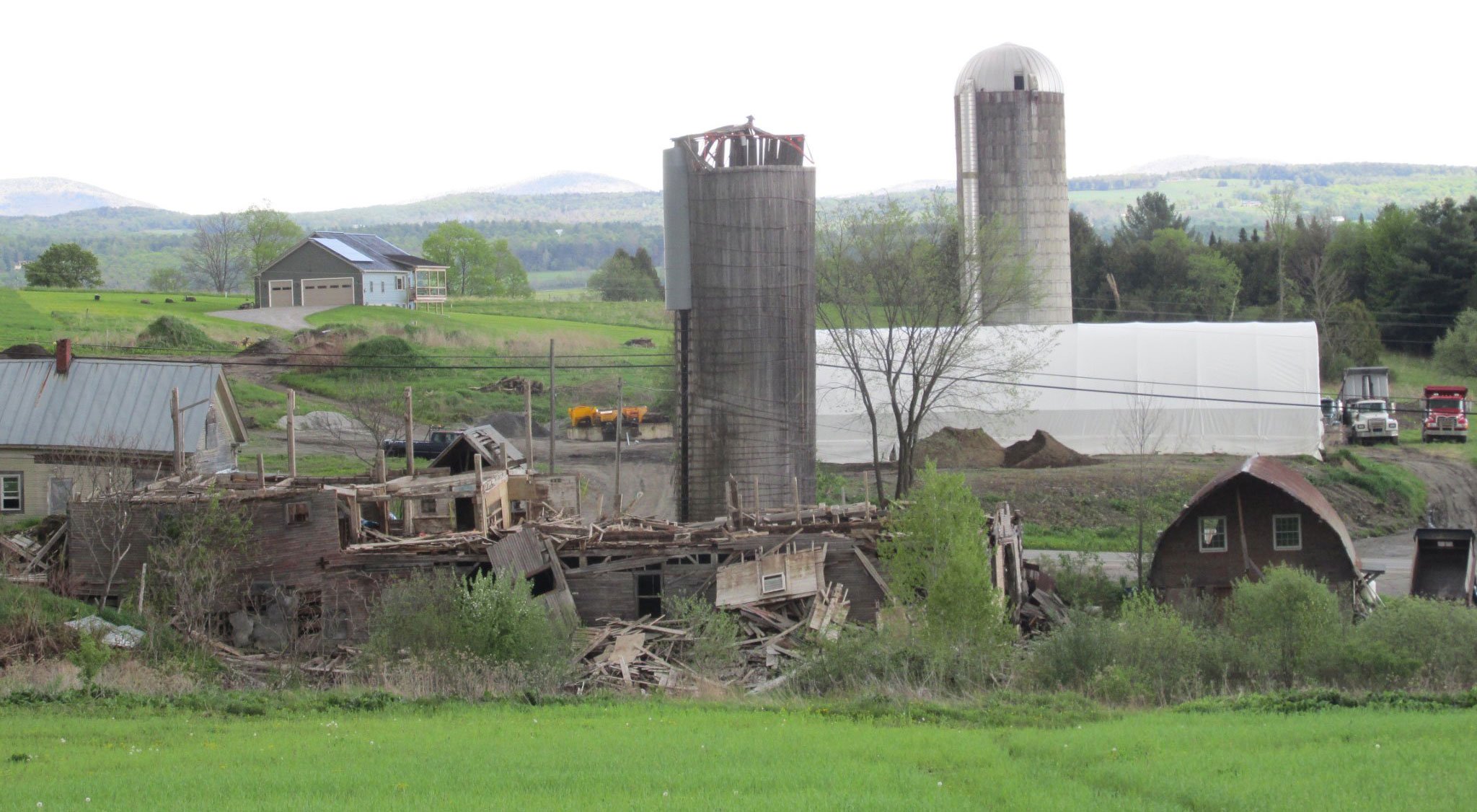
Farm History
Bobolink Farm History
Origin Story
The idea of Bobolink Farm began when we were living on three acres in Putney and got three sheep to help manage the property. Our flock of three soon grew to twenty, and grazing expanded to friends’ apple orchard, where the sheep had many adventures, including with untrained sheep dogs, fireworks, and visits to the neighbors. At this point, we set our sights on buying a farm, a process that eventually led us to central Vermont, where each of us had lived previously.
In 2014, we bought the farm on Towne Hill Road in East Montpelier, still known to many in the area as the Hawkins Farm. After decades as a dairy farm, the Hawkins had sold the property in the early 1990s, and both land and house had been rented out for twenty years. When we mentioned it, people regularly said, “Oh, you bought THAT place!”
The Vision
And with good reason. Like so many farms in Vermont, this place had been functionally abandoned. When we moved in, debris was everywhere. A garage roof was sitting on the ground where it had fallen. An equipment shed propped up with logs was on the verge of collapse. The once-grand four-story barn had fallen into disrepair, leaving the entire structure in a giant heap (except for the upper beams, which had been sold). A quonset-roofed ell to the old barn was the only stable building, and even it was full of trash. The woods had been treated to a whole-tree harvest. The fields were either idle, growing trees and burdocks, or they had been corn fields abandoned to the cover crops.
Despite this, and against the advice of many, we dove in. It was an eyesore, but was accessibly priced, in a great location, and had the potential to make decent pasture. When we squinted our eyes hard enough, we could envision what it might be.
The First Flock
After a slight misadventure involving a flat tire on the trailer and leaving the sheep by the side of I-91 at the Randolph weigh station while we bought a spare tire, the flock arrived in the fall and immediately started to work on reclaiming pasture. That first year, while they grazed areas that had more grass than weeds, we reseeded the crop fields to forages and started pushing back the overgrown field edges. We sent away two containers of scrap metal, one of tires, and truckloads of trash, and we pulled down the teetering wooden silo. We cleaned and repainted the inside of the house, removed the trash from the basement, and rebuilt the water system and heating system. We started collecting needed farm equipment from auctions and Craigslist. We had a LOT of help from family, friends, and neighbors, and we made significant progress.
Bit by Bit
Changes in our off-farm job responsibilities meant that a 5-year plan became a 10-plus-year plan, but we have continued to work through the long to-do list over the past nine years. Every year we hauled away more trash and cleaned up more of the site. We emptied out the quonset barn and adapted it for sheep. We tore down the equipment shed and built a new post-and-beam building on its footprint, using boards from the old silo for the hayloft floor. A new sugarhouse was constructed, also using reclaimed materials, including framing from the former equipment shed and roofing from the old dairy barn.
Bit by bit, the remnants of the old dairy barn were removed and the site cleaned up in late fall 2022. The debris around the house was slowly cleaned up as well and the site graded. The finishing touches are still incomplete, and many items on the list remain, but, finally, it no longer looks like a dump.
The barnyard before renovation.
Barn rubble with silos in 2014
View from the north before
The barnyard after.
After silos and rubble removed.
View from the north after
Grazing Management
Meanwhile, the sheep flock has expanded from about 20 ewes to 100 ewes and their lambs. Intensive grazing management has maintained decent forage in the former crop fields, and has allowed other pastures to regain productivity. Clearing brush and weeds from the hedgerows and field edges has expanded the available pasture and simplified the management. In addition, friends and neighbors have graciously allowed us to use their nearby fields, for both grazing and haying, so that, even with this substantial flock expansion, we can provide all the grass the sheep can eat during the grazing season, and much of their winter feed also.
The Road Ahead
There is still much to be done toward our ultimate goal of optimizing systems for a viable grazing operation. But when we compare photos from nine years ago and today, we feel some reassurance that we are getting closer. And, as we glean treasures from the rubble (a Barr’s Soda bottle from Hardwick, part of a cast-iron stone boat sledge made in Randolph, a broken partially carved gravestone from Barre), we are reminded that ours is a brief chapter in the rich and long history of this land that we are stewarding.
This farm remains something of a landmark, on a well-travelled commuter route to the local high school and state office buildings in Montpelier. Now, when people say “Oh you live in THAT place!” they are more likely to mean the place where there are lambs in the barnyard, or the place with the new barn, or the place where they look to see where the sheep are grazing.




